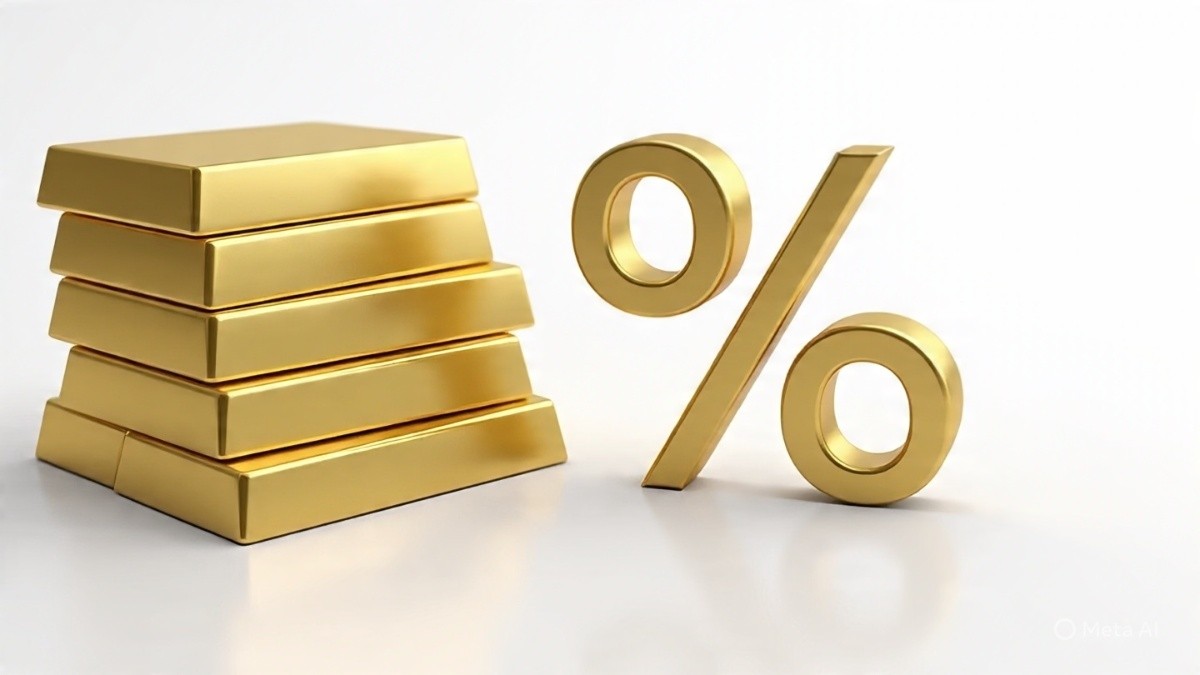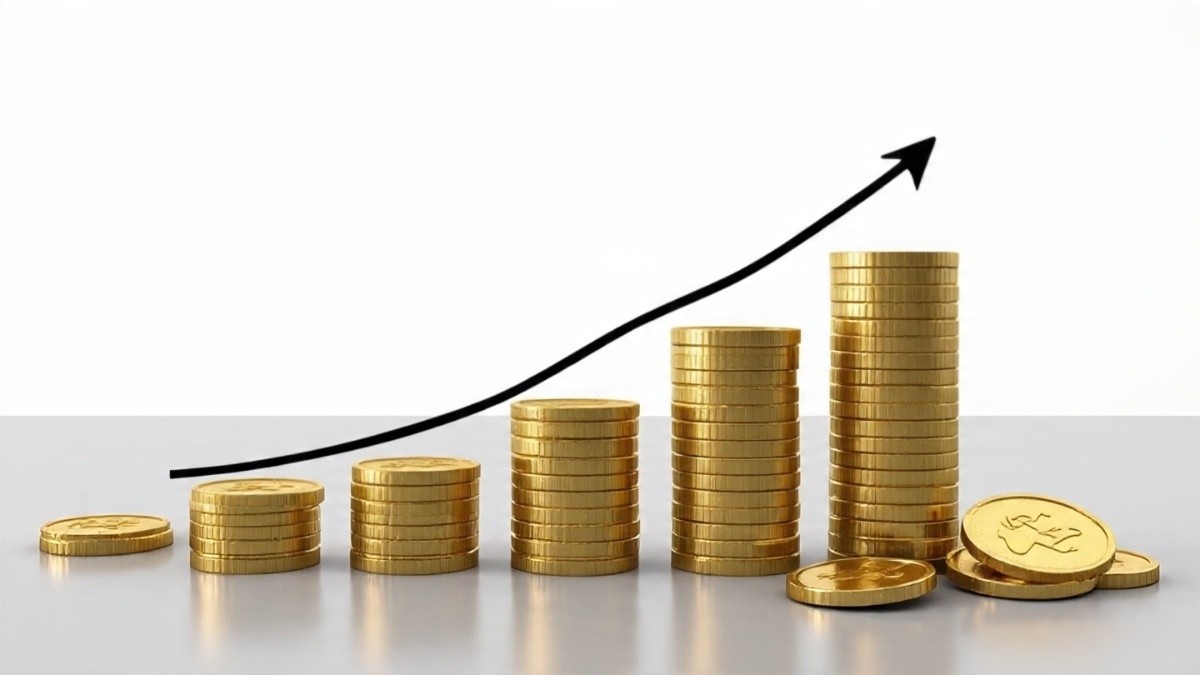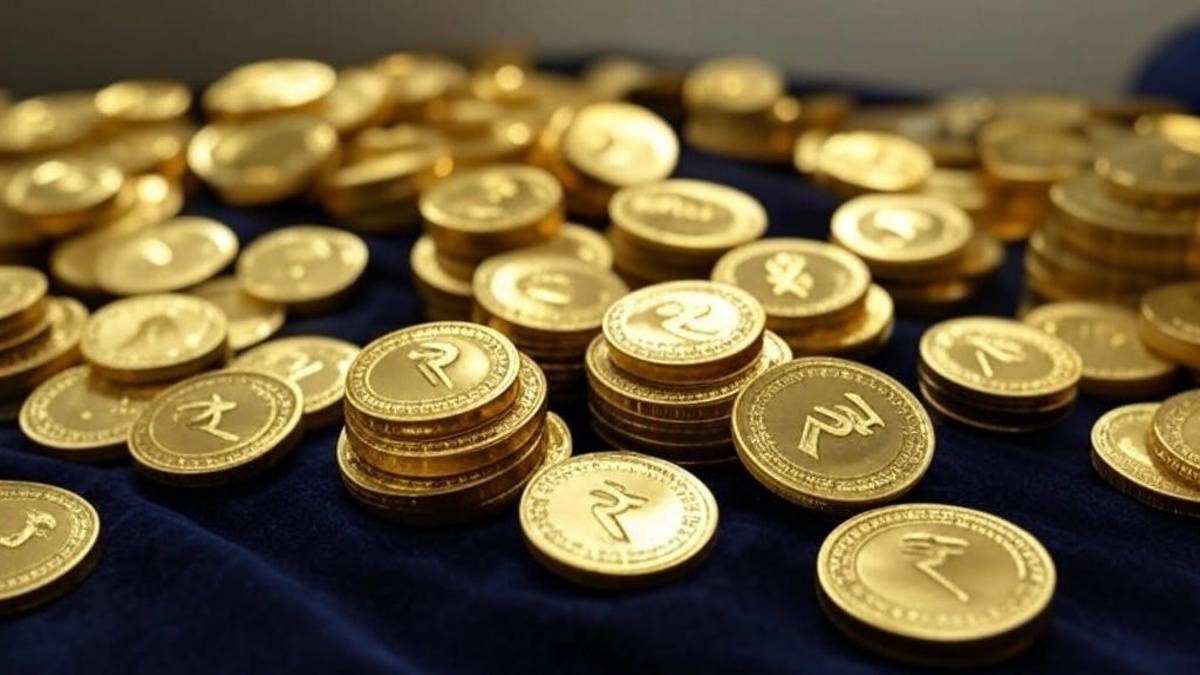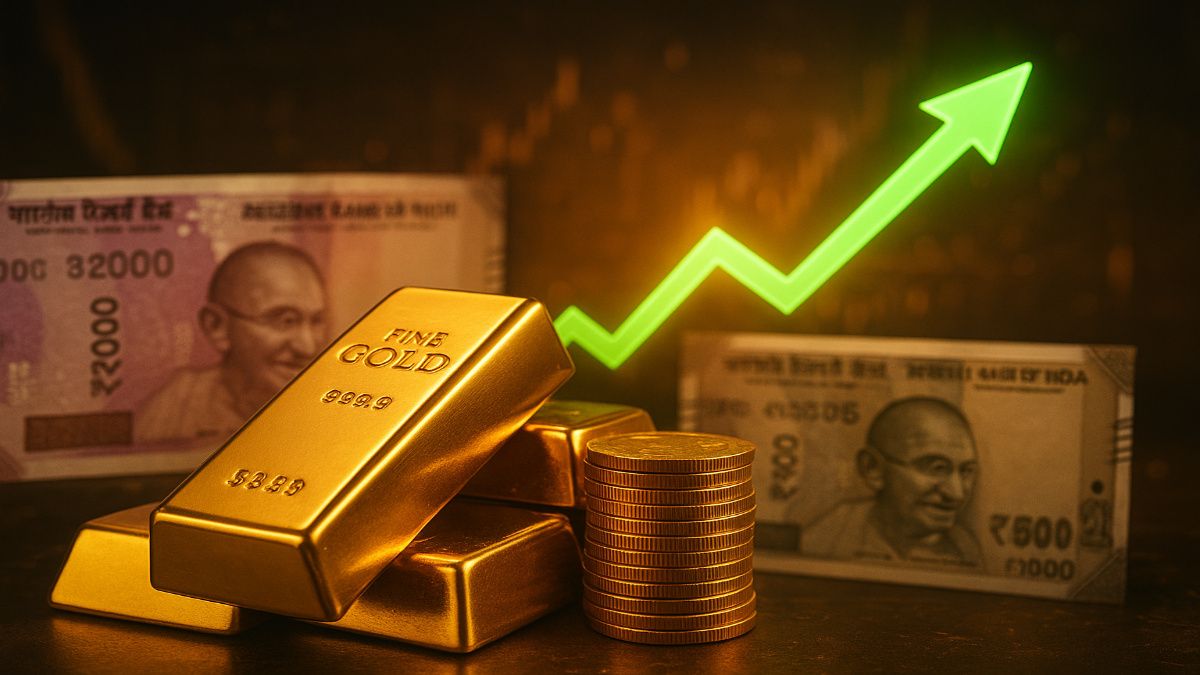In India, where gold is not just an investment but a cultural cornerstone symbolizing wealth and prosperity, Gold Exchange-Traded Funds (ETFs) have redefined how investors engage with this cherished metal. Unlike traditional gold jewelry or coins, which carry sentimental value but logistical challenges, Gold ETFs offer a seamless way to invest in gold bullion through stock exchanges. Each unit of a Gold ETF, typically equivalent to one gram of gold, allows investors to tap into the gold market without the burden of physical ownership, making it ideal for young professionals and families saving for milestones like weddings or education.
Gold ETFs operate with the simplicity of stock trading. Investors can buy or sell units on exchanges like the NSE or BSE, with prices mirroring the real-time market value of gold. This transparency ensures you know exactly what your investment is worth, unlike physical gold, where prices can vary due to jeweler margins or regional differences. For example, a Mumbai-based investor can trade Gold ETF units instantly without worrying about verifying purity or negotiating with a local dealer.
By eliminating the need for secure storage or insurance, Gold ETFs address common concerns faced by Indian households, such as theft or loss of physical gold kept in home lockers. Their high liquidity means you can sell your holdings within minutes during market hours, a stark contrast to the time-consuming process of selling gold jewelry. Additionally, with lower transaction costs compared to physical gold’s making charges, Gold ETFs are a cost-effective choice for diversifying portfolios. This guide will equip beginners with practical strategies to leverage Gold ETFs, helping you align your investments with India’s evolving financial landscape in 2025.
Step-by-Step Guide to Investing in Gold ETFs via Demat Accounts

Investing in Gold Exchange-Traded Funds through a demat account in India can be a straightforward process for beginners. This guide outlines the steps involved, ensuring you have a clear understanding as you embark on this investment journey.
The first step is selecting a reputable brokerage firm. Look for a broker that offers a user-friendly platform, competitive fees, and a range of investment options within their demat accounts. It is essential to check for their regulatory compliance, customer service quality, and online reviews to make an informed choice. Once you have identified the right broker, you can proceed to the next step.
Creating a demat account is vital as this account will hold your Gold ETFs in electronic form. You will typically need to provide KYC documents, including identity proof, address proof, and a passport-sized photograph. Many brokerage firms offer the option to open a demat account online, which saves time and effort. Ensure that you carefully fill out all the required forms and provide accurate details to avoid any issues.
After your demat account is successfully created, you will need to fund your account. This typically involves linking your bank account to your demat account for seamless transactions. Ensure you transfer enough funds based on the price of the Gold ETFs you intend to purchase.
With your account funded, the next step involves researching and selecting the Gold ETF that aligns with your investment objectives. Consider factors such as past performance, expense ratios, and the credibility of the asset management company offering the ETF. Once you have made your selection, you can place a buy order through your brokerage platform. Follow the instructions provided by your broker to execute the purchase efficiently.
By following these steps, you can confidently invest in Gold ETFs through your demat account, paving the way for a potentially rewarding investment strategy in gold. This method not only simplifies the process but also allows you to benefit from the price movements of gold in a more accessible manner.
Best Gold ETFs for Beginners in India
Investing in Gold ETFs can be an efficient way for beginners in India to gain exposure to the yellow metal without having to deal with the hassle of physical ownership. Several options are suitable for new investors, each offering unique features and performance metrics. Among the top choices is the Nippon India ETF Gold Bees, which has gained considerable popularity in the market. This ETF aims to minimize tracking error, ensuring that its performance closely corresponds to that of gold prices. It boasts a competitive expense ratio, making it accessible for those who are just starting their investment journey.
Another notable option is the HDFC Gold ETF, known for its robust management history and proven track record. The fund is structured to provide investors with returns equivalent to the price of physical gold, minus expenses. Its long-term performance has demonstrated reliability, which is a critical consideration for beginners who prioritize stability. Additionally, the HDFC Gold ETF also has a relatively low expense ratio, which allows investors to retain more of their gains over time.
Investors might also consider the ICICI Prudential Gold ETF, which offers similar advantages, along with the backing of a well-established asset management company. Performance metrics and transparency in operations make it a viable option for those seeking to diversify their portfolios through gold. As these ETFs provide liquidity and easy access through stock exchanges, beginners can consider rebalancing their investments as they grow more experienced in the gold market.
Choosing the right gold ETF is essential for new investors in India. By considering factors such as performance, management history, and expense ratios, individuals can make informed decisions that align with their financial goals. As the market continues to evolve towards 2025, monitoring these ETFs will provide insights into the best investment strategies within the realm of gold.
Read : List of all Gold ETFs listed on NSE
Gold ETFs vs Mutual Funds: Which is Better for Indian Investors?
For Indian investors like Priya, a 30-year-old IT professional saving for a future home, choosing between Gold ETF and gold mutual funds can shape her financial strategy. Both options provide exposure to gold’s value, but their differences in costs, flexibility, and returns can significantly impact her portfolio. Let’s explore how these vehicles compare to help investors like Priya make informed choices.
Cost is a key differentiator. Gold ETFs, such as the Nippon India ETF Gold BeES, typically have lower expense ratios, often around 0.5%–0.79%, due to their passive nature of tracking gold prices. For Priya, investing ₹1 lakh in an ETF with a 0.5% expense ratio means paying just ₹500 annually in fees. In contrast, gold mutual funds, which are often actively managed, may charge 1%–2% in fees, costing Priya ₹1,000–₹2,000 yearly on the same investment. Over a decade, these savings from ETFs can compound significantly, boosting her returns.
Liquidity is another advantage for ETFs. Priya can trade Gold ETF units on the NSE during market hours, allowing her to sell instantly if gold prices spike or she needs cash for an emergency. Gold mutual funds, however, are priced only at the day’s end, meaning Priya must wait to access her funds, which could be inconvenient if she needs quick liquidity for her home down payment.
Both options aim to mirror gold’s performance, offering similar long-term returns. However, ETFs’ lower fees and real-time trading make them ideal for investors prioritizing cost-efficiency and flexibility. By aligning her choice with her goals—saving steadily while staying liquid— Priya can decide whether ETFs or mutual funds best suit her financial journey in 2025.
Understanding Tax Benefits of Gold ETFs in India for 2025

Gold Exchange-Traded Funds (ETFs) in India offer tax advantages that make them an appealing choice for investors, especially under the revised tax rules from the 2024 Union Budget. Understanding the capital gains tax structure for Gold ETFs is essential for crafting a tax-efficient investment strategy in 2025.
As financial assets, Gold ETFs are subject to short-term and long-term capital gains taxes, depending on the holding period. As per the changes from the 2024 Budget (effective for sales after July 23, 2024), a Gold ETF is considered short-term if held for less than 12 months, and long-term if held for 12 months or more. Earlier, the period was 36 months; the new rule shortens it for these assets. These gains are taxed at your income tax slab rate, which could range from 5% to 30% depending on your income level. For example, an investor in the 30% tax bracket selling Gold ETF units after 18 months would pay 30% tax on the profits. Indexation benefits — which adjust the purchase price for inflation — were removed for long-term gains from Gold ETFs sold after July 23, 2024. Short-term gains have never been eligible for indexation.
As per the Budget 2024 tax rules (effective July 23, 2024), long-term capital gains on Gold ETFs held for 12 months or more are taxed at 12.5% without indexation. There is no exemption threshold, so the entire gain is taxed. For instance, If you invest ₹5 lakh in a Gold ETF in 2023 and sell it in 2026 for ₹6.5 lakh, your ₹1.5 lakh gain will be taxed at 12.5%, resulting in a tax liability of ₹18,750. This lower LTCG rate encourages long-term investment, aligning with gold’s role as a wealth-preserving asset.
By understanding these tax rules, investors can optimize their Gold ETF strategies for 2025, balancing holding periods with tax liabilities to maximize returns. Consulting a financial advisor can further refine your approach to fit your financial goals.
How to Choose Low-Cost Gold ETFs in India
When considering investment in gold exchange-traded funds (ETFs) in India, one of the critical factors to evaluate is the expense ratio. The expense ratio refers to the annual fee that fund charges for managing the investment, expressed as a percentage of the total assets under management. A lower expense ratio generally translates to higher net returns for investors, making cost-efficient investing a prime consideration. The impact of these fees can compound over time, significantly affecting overall investment performance, especially in a long-term investment horizon.
For instance, the Zerodha Gold ETF stands out as a compelling option, featuring a low expense ratio of just 0.32%. Such rates not only reduce the friction costs associated with investment but also allow investors to retain a larger portion of their gains. This is particularly pertinent in the context of gold ETFs, where price fluctuations in the underlying asset can significantly influence returns. By selecting gold ETFs with competitively low fees, investors are better positioned to achieve their financial goals without undue erosion of their capital.
Another essential aspect in identifying low-cost gold ETFs is to review the total cost of ownership, which extends beyond just the expense ratio. Other factors that could influence overall investment costs may include brokerage fees, transaction costs, and taxes. By factoring in all potential costs associated with investing in gold ETFs, investors can better ascertain the true cost associated with their chosen funds. Comparisons of several gold ETF options against their expense ratios and total cost will serve as a useful metric for decision-making.
In conclusion, evaluating expense ratios and other associated costs plays a crucial role in selecting low-cost gold ETFs in India. By focusing on cost-efficient investment options, investors can optimize their portfolios for better returns over time, thereby enhancing the potential of their investments in gold ETFs.
Read : Top 5 Gold ETFs with Lowest Expense Ratio
Are Gold ETFs Safe for Long-Term Investment in India?

Gold exchange-traded funds (ETFs) have gained popularity among investors in India, particularly those seeking a hedge against inflation and economic uncertainties. As a long-term investment option, Gold ETFs offer a way to invest in physical gold without the challenges of storage and liquidity. However, potential investors often wonder about the safety and volatility of these instruments against other types of investments.
One of the most significant advantages of Gold ETFs is their exposure to the price movements of gold, which has historically been considered a store of value. Unlike traditional stocks or bonds, gold tends to retain its purchasing power over time, making it appealing for risk-averse investors. In periods of market turbulence, gold has demonstrated resilience, often appreciating in value when other assets decline. This characteristic renders Gold ETFs a relatively safe option for long-term holding, particularly for those looking to diversify their investment portfolio.
Despite this safety, investors should be aware of some inherent risks. Gold prices can be volatile due to various factors such as changes in global demand, geopolitical tensions, and fluctuations in currency value. This volatility could impact the performance of Gold ETFs. Furthermore, while they do offer liquidity advantages, the ability to buy and sell these ETFs does not necessarily shield investors from short-term price swings. Therefore, a long-term investment perspective is crucial to ride out these potential fluctuations.
For those considering Gold ETFs for their investment strategy, it is advisable to evaluate their risk tolerance and investment horizon. While many view gold as a protective asset, market dynamics can affect performance. Conducting thorough research and consultation with a financial advisor can also help mitigate risks associated with gold investments. In conclusion, Gold ETFs can be a safe long-term investment in India, provided that investors are well-informed about their features and risks.
Practical Steps to Buy Gold ETFs Through a Demat Account in India
Investing in Gold Exchange-Traded Funds (ETFs) in India is a straightforward process, particularly when you have a demat account set up with a trading platform. Here, we outline the practical steps needed to purchase gold ETFs, using popular platforms such as Zerodha or Groww as examples.
First, you must ensure that you have an active demat and trading account. A demat account holds your financial securities in electronic form, while a trading account allows you to buy and sell securities. If you haven’t already opened these accounts, follow the account opening procedures provided by your chosen platform. Typically, this will require you to submit identification documents, proof of address, and complete an online KYC (Know Your Customer) process.
Once your accounts are set up, log in to the trading platform. Navigate to the search bar and type “Gold ETF” to explore the available options. Popular gold ETFs in India include the Nippon India Gold ETF, SBI Gold ETF, and HDFC Gold ETF. Take the time to review their performance, expense ratio, and historical returns to find the one you believe aligns best with your investment goals.
After selecting an ETF, specify the number of units you wish to purchase and review the current market price. Ensure that the amount you intend to invest is within your budget. Next, place a buy order by entering the required details and confirming your purchase, just like you would for any other stock purchase. Your orders will typically be executed at the prevailing market price.
Lastly, after your purchase is made, you can monitor your investments through your demat account. Keep track of price fluctuations and market trends, as these will inform your future investment decisions. With commitment and diligence, investing in gold ETFs can be a valuable addition to your portfolio.
Gold ETFs for Portfolio Diversification in India

In the increasingly dynamic landscape of investment, gold exchange-traded funds (ETFs) emerge as a valuable tool for investors in India seeking portfolio diversification. Gold has traditionally been viewed as a safe haven asset, providing a hedge against inflation and volatility in the equity markets. By incorporating gold ETFs into an investment strategy, individuals can mitigate risks associated with market fluctuations while potentially enhancing their overall returns.
Gold’s unique characteristics make it a strategic asset. Unlike stocks or bonds, which can experience significant price swings driven by economic changes or company performance, gold tends to maintain its value or appreciate during periods of financial uncertainty. This inverse relationship to conventional assets allows gold ETFs to act as a buffer in times of market stress, offering stability and preserving capital. Moreover, gold has historically outperformed fiat currencies during inflationary periods, demonstrating its efficacy as an inflation hedge.
The appeal of gold ETFs lies not only in their protective attributes but also in their liquidity and ease of access. Investors can buy or sell gold ETFs on stock exchanges, providing a level of flexibility that physical gold does not offer. Unlike investing in physical gold, which involves storage and insurance costs, gold ETFs simplify ownership and management. This is particularly advantageous for investors who may not have the capacity to store physical gold securely.
Incorporating gold ETFs into a diversified portfolio can enhance its resilience against unexpected economic shifts. By allocating a portion of an investment portfolio to gold, investors can better position themselves for long-term growth while balancing risk. In an era where market volatility is increasingly prevalent, gold ETFs serve as an essential component of a robust investment strategy for those aiming to secure their financial future in India.
Understanding Tracking Error in Gold ETFs in India
When investing in Gold Exchange-Traded Funds (ETFs) in India, it is essential for investors to understand the concept of tracking error. Tracking error is defined as the discrepancy between the performance of the ETF and the performance of the underlying asset it aims to replicate, which, in the case of gold ETFs, is the price of gold. This metric is crucial, as a lower tracking error indicates that the ETF is closely following the price movements of gold, ensuring that investors receive returns that are more aligned with the actual performance of the commodity.
For instance, the Kotak Gold ETF has reported a tracking error of approximately 0.28%. This relatively low figure suggests that the performance of this particular ETF is closely aligned with changes in the gold price, making it an attractive option for those looking to invest in gold without the complexities of physical ownership. Conversely, a high tracking error implies that the ETF may not accurately reflect the price movements of gold, which could lead to less favorable returns for the investor. Therefore, it is imperative for investors to consider tracking error when evaluating the potential performance of various gold ETFs.
Understanding tracking error can help investors make informed decisions about which gold ETFs to include in their investment portfolios. It allows them to assess the efficiency of the fund manager’s strategy in managing the ETF and can serve as a guide for comparing various options available in the Indian market. By focusing on funds with lower tracking errors, investors can enhance their chances of achieving their financial objectives related to gold investments. Establishing a good grasp of tracking error is foundational for making prudent investment decisions in Gold ETFs in India.
Top Gold ETFs for Inflation Hedging in India 2025
As inflation remains a persistent concern for investors, gold exchange-traded funds (ETFs) have gained prominence as a viable hedging option. In India, several gold ETFs have stood out as favorable choices for investors seeking to mitigate the impact of inflation, particularly as we look towards 2025. One noteworthy fund is the LIC MF Gold ETF, which is expected to perform robustly in the coming years. The LIC MF Gold ETF has garnered attention due to its strong historical returns and competitive expense ratios.
Investors are increasingly recognizing gold’s status as a safe haven asset, particularly during periods of economic uncertainty. The recent trends in inflation indicate that holding gold can serve as an effective strategy to preserve purchasing power. The LIC MF Gold ETF, for instance, is backed by physical gold, providing a sense of security to investors. Furthermore, it allows for easy access to gold investment without the hassle of storage or security concerns, making it an appealing choice for many.
In addition to the LIC MF Gold ETF, other notable contenders in the Indian market include the SBI Gold ETF and the HDFC Gold ETF. Each of these ETFs offers investors a chance to gain exposure to gold while maintaining liquidity and flexibility. The SBI Gold ETF has a strong track record and is known for its low expense ratio, while the HDFC Gold ETF provides a reliable, straightforward option for investors new to gold investments. As inflation rates are anticipated to fluctuate, these gold ETFs can provide not just a hedge against rising prices but also an opportunity for capital appreciation in the long term.
Read : Comparison of performance Nifty 50 vs Gold from 2015 to 2025
Final Take: Why Gold ETFs Deserve a Place in Your Portfolio

Investing in Gold ETFs in India offers a balanced blend of safety, liquidity, and potential for capital appreciation. They remove the hassles of physical gold ownership while giving investors real-time market exposure to this timeless asset. By understanding factors like expense ratios, tax benefits, and tracking errors, investors can make informed decisions that align with their financial goals. As 2025 approaches, Gold ETFs continue to stand out as a smart choice for diversification, inflation hedging, and long-term wealth creation. The key is to start small, stay consistent, and review your portfolio periodically for the best results.
Disclaimer : This article is for informational and educational purposes only and does not constitute financial, investment, or tax advice. Gold ETF investments are subject to market risks, including price fluctuations in gold. Past performance is not indicative of future results. Investors should conduct their own research and consult a certified financial advisor before making any investment decisions. The author and publisher are not responsible for any financial losses arising from the use of the information provided in this blog.


